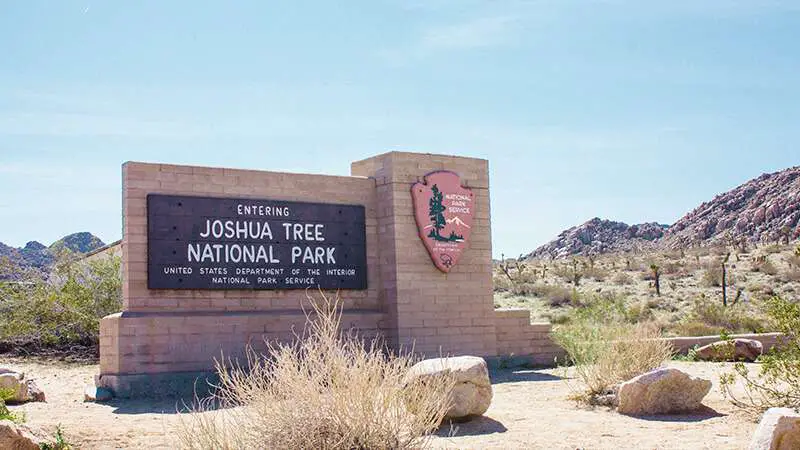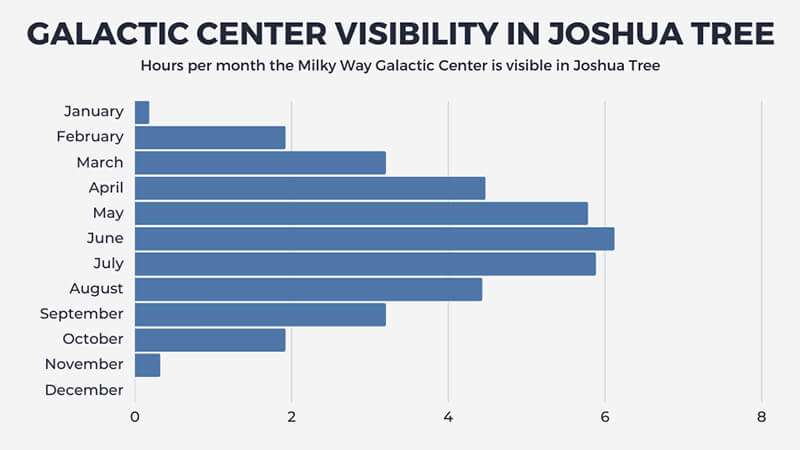Stargazing in Joshua Tree should be at the top of your list if you’ve ever wanted to experience the night sky like never before. With its dark skies and sparse light pollution, this desert oasis is a perfect spot to take in all our universe has to offer.
In this article, I’ll answer the question, “Is Joshua Tree good for stargazing?” and provide tips on how to get an unforgettable view of the night sky. Hint: YES! It’s good for stargazing!
In this article, you get
Stargazing opportunities at Joshua Tree
A look at the Bortle Scale in Joshua Tree
The best time to visit Joshua Tree for stargazing
Two campgrounds for the best stargazing in Joshua Tree
By the end of this article, you’ll understand why Joshua Tree is an excellent place for stargazing and more!
Let’s dive right in.
Recommended For You
INTRODUCTION TO JOSHUA TREE NATIONAL PARK

Joshua Tree National Park is an impressive and unique landscape that spans two deserts, the Mojave and Colorado. It is a place of immense natural beauty and historical significance, protecting hundreds of archaeological and historic sites.
It is also a place of darkness, providing you with some of the darkest night skies in the region. The Park has taken steps to preserve its darkness, including influencing local ordinances and educating visitors on the importance of natural darkness.
It is an ideal destination to experience the wonders of nature and star-filled skies.
IS JOSHUA TREE GOOD FOR STARGAZING?

Joshua Tree offers some of the darkest nights in Southern California and is an International Dark Sky Park, making it the perfect destination for stargazing.
You can admire the Milky Way and see many constellations, planets, and passing meteors against the glittering night sky.
You can camp in one of the nine campgrounds or venture away from roads and people for an even darker experience.
To get the best experience, you should bring extra layers of warm clothing, food, water, and a red flashlight to navigate and check for hazards.
FREE STARGAZING CHECKLIST
My 5-page Stargazing Checklist will enhance your astronomical observations.
Follow this free checklist to navigate the night sky with confidence, clarity, and a sense of preparedness for a rewarding stargazing experience.

HISTORY OF THE PARK

Joshua Tree National Park has a long and rich history, with evidence of human habitation dating back at least 5,000 years.
In 1936, 825,000 acres of the region were set aside as Joshua Tree National Monument.
In 1950, the eastern portion of the historic Oasis of Mara was deeded to the National Park Service.
The Park was elevated to national park status in 1994 as part of the Desert Protection Bill, which added 234,000 acres to the Park’s area.
Today, Joshua Tree National Park is home to 813 higher plant species, 46 reptile species, 57 mammal species, and over 250 bird species, and it has 420,000 acres of designated wilderness.
WHAT IS THE BORTLE SCALE RATING IN JOSHUA TREE?

The Bortle Scale measures how dark a sky is, and it’s one of the most important factors for considering whether or not you’ll be able to observe stars in the night sky.
If you’re planning a trip to Joshua Tree National Park for stargazing, you may be wondering what the Bortle Scale rating is in the Park. The good news is that Joshua Tree National Park has an incredibly dark sky, with a Bortle Scale rating of 2 on the Dark Sky Scale!
WHAT IS THE BORTLE SCALE?
In 2001, American astronomer John E. Bortle developed the Bortle Scale to indicate how dark a sky is at any given location. The scale measures light pollution from nine different sources, including cities, artificial skyglow, and moonlight. The lower the Bortle scale rating, the darker the sky at a particular location.
BORTLE SCALE RATING IN JOSHUA TREE
With a rating of 2 on the Bortle Scale, Joshua Tree National Park is an ideal place to stargaze due to its elevation, desert air, and relatively stable atmosphere.
Joshua Tree is a great spot to get away from the light pollution of large cities and to get an unobstructed view of the stars and the Milky Way.
The Park is also far enough away from light sources that you can find plenty of dark spots, meaning that the best time to stargaze in Joshua Tree is year-round.
WHEN IS THE BEST TIME TO STARGAZE IN JOSHUA TREE?

The best time to stargaze in Joshua Tree is around the new moon. This way, the moon’s light doesn’t compete as much with the stars.
If you visit 2-3 days before or after a new moon, you’ll experience maximum darkness. To learn more, read my article Can you still see stars with a full moon in Joshua Tree?
But if you’re looking for more optimal viewing of the Milky Way, the best time to visit is from April to August, when the nighttime temperatures are mild, and you’ll have more viewing hours of the Milky Way Galactic Center in Joshua Tree.
No matter what time of year you visit Joshua Tree, you’ll get a fantastic night sky view!
WHERE ARE THE BEST AREAS FOR STARGAZING IN JOSHUA TREE?
Many spots inside the Park are excellent for stargazing, such as Cap Rock, which has a large parking lot with picnic benches you could lay on while you stargaze.
COTTONWOOD CAMPGROUND: BEST PLACE TO STARGAZE IN JOSHUA TREE
If you’re looking to spend the night stargazing, Cottonwood Campground is the place to be.
Cottonwood Campground doesn’t have the huge boulders and rock formations other parts of the Park have. That makes it one of the best spots to take wide-angle photos of the entire night sky.
So if you’re looking for an incredible stargazing experience, Cottonwood Campground is the place to go.
JUMBO ROCKS CAMPGROUND: A 18-MILE DRIVE FROM WEST ENTRANCE
If you’re looking for a unique camping experience, Jumbo Rocks Campground is the perfect spot.
Located 18 miles from the west entrance of Joshua Tree National Park, this campground is surrounded by massive piles of boulders and Joshua Trees, creating an unforgettable atmosphere.
I recommend this spot if you want to feature stirring foreground elements in your astrophotography.
SUMMARY
I hope you like my article about “Is Joshua Tree Good For Stargazing?”
Joshua Tree National Park is a fantastic place for stargazing.
But is Joshua Tree free at night?
Its night skies make clear views of the Milky Way and other constellations.
The best time to visit the Park for stargazing is during the Milky Way Season, which runs from April to August.
Several great spots in the Park are perfect for stargazing, such as Cottonwood Campground and Jumbo Rocks Campground.
So if you’re looking for a great place to go stargazing, then Joshua Tree National Park is worth considering! With its Bortle Scale rating of 2, Joshua Tree is one of the best places in the US for stargazing.
Additional articles from my Dark Sky Parks series you may enjoy:
- Acadia National Park stargazing
- Big Bend National Park stargazing
- Bryce Canyon National Park stargazing
- Death Valley National Park stargazing
- Great Basin National Park stargazing
- Haleakala National Park stargazing
- Joshua Tree National Park stargazing
- Olympic National Park stargazing
- Red Rock Canyon stargazing
- Zion National Park stargazing



